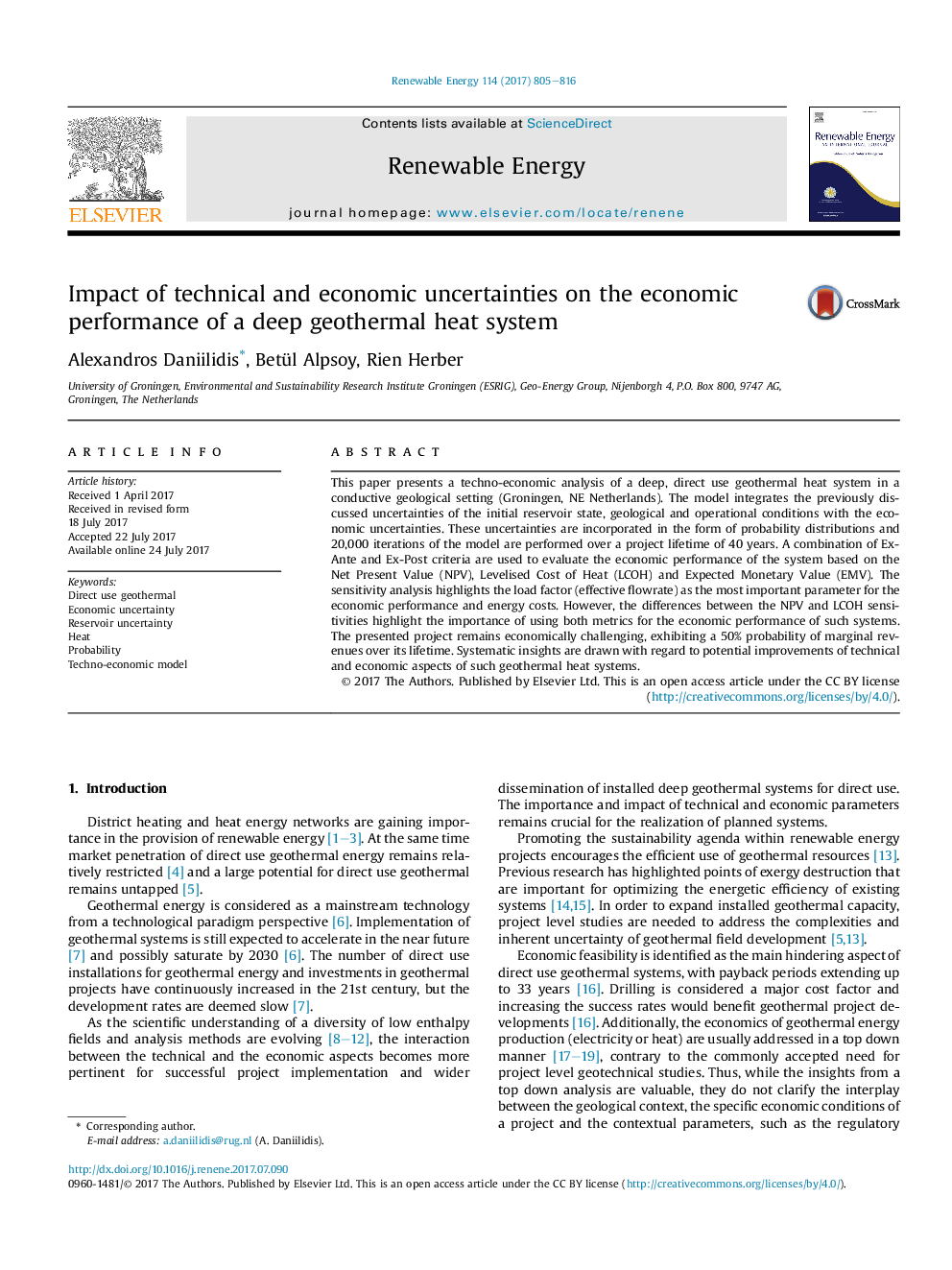| Article ID | Journal | Published Year | Pages | File Type |
|---|---|---|---|---|
| 4926199 | Renewable Energy | 2017 | 12 Pages |
â¢Probabilistic techno-economic model of a deep, direct use geothermal heat system.â¢Technical and economic uncertainties are analysed through 20,000 iterations.â¢Sensitivity analysis for the NPV and LCOH indexes.â¢Load factor and investment sequencing are impactful on profitability.â¢The Groningen geothermal system has 50% chance for marginal profits after 40 years.
This paper presents a techno-economic analysis of a deep, direct use geothermal heat system in a conductive geological setting (Groningen, NE Netherlands). The model integrates the previously discussed uncertainties of the initial reservoir state, geological and operational conditions with the economic uncertainties. These uncertainties are incorporated in the form of probability distributions and 20,000 iterations of the model are performed over a project lifetime of 40 years. A combination of Ex-Ante and Ex-Post criteria are used to evaluate the economic performance of the system based on the Net Present Value (NPV), Levelised Cost of Heat (LCOH) and Expected Monetary Value (EMV). The sensitivity analysis highlights the load factor (effective flowrate) as the most important parameter for the economic performance and energy costs. However, the differences between the NPV and LCOH sensitivities highlight the importance of using both metrics for the economic performance of such systems. The presented project remains economically challenging, exhibiting a 50% probability of marginal revenues over its lifetime. Systematic insights are drawn with regard to potential improvements of technical and economic aspects of such geothermal heat systems.
